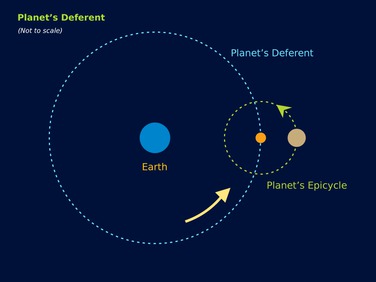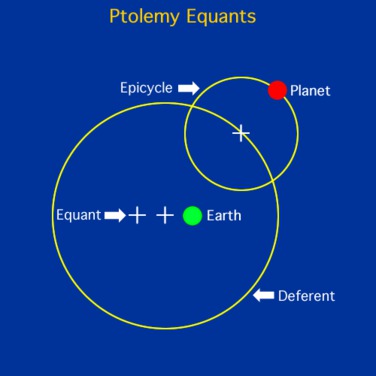The geocentric universe had one very obvious shortcoming: the inability to explain the retrograde motion of planets.
Retrograde motion—the apparent brief backward movement of a planet in its orbit—occurs when the Earth, which has a faster orbital speed than any of the outer planets, overtakes one of these planets in its orbit.
Around 150 B.C., Hipparchus, unwilling to completely alter the current paradigm, proposed a system of epicycles—smaller circles he added to the larger orbits—to explain retrograde motion.
As observation techniques improved, however, and more data was accumulated, it became clear that even this system was insufficient to explain the motions of the planets. Enter Ptolemy, who around 100 A.D. added yet another complication to the model by moving the center of the planetary orbits away from the Earth to new locations he called equants. Even the Earth was offset from the center, although it was still quite stationary at this new location in the universe.

